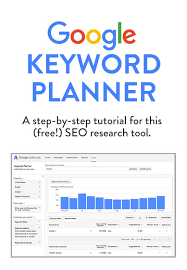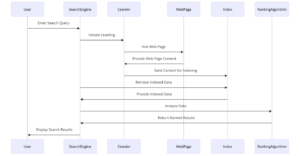
Search engine optimization (SEO) is essential for driving traffic and achieving online success. At the heart of SEO lies keyword research—a foundational practice that can dramatically improve your website’s visibility and attract the right audience.
Mastering keyword research not only enhances your online presence but also elevates your entire digital marketing strategy. In this guide, we’ll explore the key steps and tools necessary for conducting effective keyword research, empowering you to optimize your content and reach your target audience more effectively.
What is Keyword Research?
Keyword research is the process of identifying and analyzing the search terms that people enter into search engines. The goal is to find keywords that are relevant to your business or website, have a high search volume, and possess manageable competition levels. By targeting these keywords in your content, you can improve your chances of ranking higher in search engine results pages (SERPs).
Why is Keyword Research Important?
- Improves SEO: Targeting the right keywords helps search engines understand your content, improving your chances of ranking higher in SERPs.
- Drives Targeted Traffic: Keywords that match user intent attract visitors who are genuinely interested in your content or products.
- Enhances User Experience: By providing content that aligns with user queries, you can improve user satisfaction and engagement.
- Competitive Advantage: Understanding which keywords your competitors are targeting can help you identify opportunities and gaps in the market.
Step-by-Step Guide to Keyword Research
Keyword research is the cornerstone of a successful SEO strategy. Understanding what your audience is searching for and aligning your content with those queries can set you apart in the competitive digital landscape.
This step-by-step guide will walk you through the process of conducting effective keyword research, from identifying relevant topics to choosing the right tools. By following these steps, you’ll be equipped to optimize your content, attract more visitors, and enhance your online visibility.
Step 1: Understand Your Niche
Before diving into keyword research, it’s essential to have a clear understanding of your niche. Identify your target audience, their pain points, and the solutions you offer. This foundational knowledge will guide your keyword research process.
Step 2: Brainstorm Seed Keywords
Seed keywords are the starting point for your keyword research. They are broad terms related to your niche that will help you generate more specific keyword ideas. For example, if you run a perfume business, your seed keywords might include “luxury perfumes,” “Oud perfumes,” and “designer fragrances.”
Step 3: Use Keyword Research Tools

Several tools can assist you in finding relevant keywords. Some of the most popular ones include:
- Google Keyword Planner: Provides keyword ideas and search volume data.
- SEMrush: Offers comprehensive keyword analysis, including competition and trend data.
- Ahrefs: Helps identify keyword opportunities and analyze competitors’ keywords.
- Ubersuggest: Generates keyword ideas and provides search volume and competition data.
Step 4: Analyze Search Volume and Competition
For each keyword, analyze its search volume and competition level. High search volume indicates a popular keyword, while high competition means more websites are targeting that keyword. Aim for a balance between the two—keywords with decent search volume and manageable competition are ideal.
Step 5: Identify Long-Tail Keywords
Long-tail keywords are more specific phrases that usually have lower search volume but higher intent. For example, “best luxury perfumes for women 2024” is a long-tail keyword compared to the broader “luxury perfumes.” These keywords often have less competition and can attract more targeted traffic.
Step 6: Assess User Intent
Understanding user intent is crucial in selecting the right keywords. User intent refers to the reason behind a search query. There are generally four types of user intent:
- Informational: The user is looking for information (e.g., “how to do keyword research”).
- Navigational: The user is trying to find a specific website (e.g., “Facebook login”).
- Transactional: The user intends to make a purchase (e.g., “buy luxury perfumes online”).
- Commercial Investigation: The user is researching products or services (e.g., “best perfumes for men 2024”).
Match your keywords to the appropriate user intent to ensure your content meets the searchers’ needs.
Step 7: Analyze Competitors
Examine the keywords your competitors are ranking for. Tools like SEMrush and Ahrefs can provide insights into your competitors’ keyword strategies. Identify keywords that you can realistically compete for and find gaps where you can offer unique content.
Step 8: Create a Keyword List
Compile a list of your target keywords, including seed keywords, long-tail keywords, and any additional keywords you’ve discovered through competitor analysis. Organize them by relevance, search volume, and competition level.
Step 9: Integrate Keywords into Your Content
Once you have your keyword list, strategically integrate them into your content. Here are some key areas to include your keywords:
- Title Tags: Ensure your primary keyword is in the title.
- Meta Descriptions: Include relevant keywords in the meta description to improve click-through rates.
- Headings: Use keywords in H1, H2, and H3 tags to structure your content.
- Body Text: Naturally incorporate keywords throughout your content without keyword stuffing.
- URLs: Include keywords in your URLs for better SEO.
- Image Alt Text: Use keywords in the alt text of images to improve image search rankings.
Step 10: Monitor and Adjust
SEO is an ongoing process. Regularly monitor your keyword rankings and adjust your strategy as needed. Use tools like Google Analytics and Google Search Console to track your performance and make data-driven decisions.
Final Thoughts
Keyword research is a vital component of any successful SEO strategy. By understanding your niche, using the right tools, and targeting the appropriate keywords, you can enhance your online visibility and attract more targeted traffic.
Remember, SEO is not a one-time effort but a continuous process of optimization and adjustment. Stay informed about the latest trends and updates in SEO to keep your strategy effective and up-to-date.
Boost Your Online Visibility with Expert SEO Services from Wambui Njuguna
Are you ready to take your website to the next level and attract more targeted traffic? Effective SEO is the key to standing out in today’s competitive digital landscape. Let Wambui Njuguna, a seasoned SEO expert, help you achieve your online marketing goals.
Why Choose Wambui Njuguna for Your SEO Needs?
- Proven Expertise: With extensive experience in keyword research, on-page optimization, and link building, Wambui can craft a tailored SEO strategy that meets your unique business needs.
- Data-Driven Approach: Using the latest tools and techniques, Wambui ensures your SEO strategy is backed by solid data and analytics, maximizing your return on investment.
- Personalized Service: Enjoy a personalized approach to SEO that focuses on your specific goals and challenges, ensuring your business gets the attention it deserves.
Services Offered:
- Comprehensive Keyword Research
- On-Page SEO Optimization
- Link Building Strategies
- Competitor Analysis
- Content Strategy and Optimization
- SEO Audits and Reporting
Don’t let your website get lost in the sea of online content. Partner with Wambui Njuguna and watch your search rankings soar. Contact Wambui Njuguna today to schedule a consultation and start your journey toward SEO success!
Get in Touch with Wambui Njuguna
Unlock the potential of your website with expert SEO services. Your path to better online visibility and increased traffic starts here!




